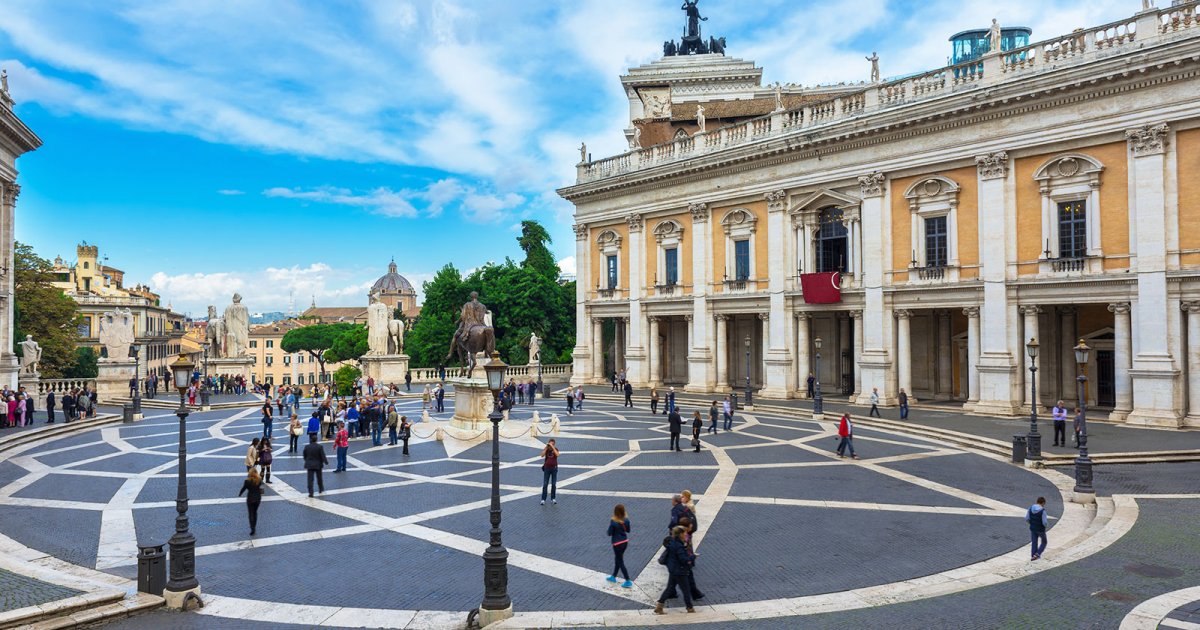CAMPIDOGLIO AND CAPITOLINE MUSEUMS, Square
 Language: English / USA
Language: English / USA
Now that you're standing in this beautiful trapezoid-shaped square, the first thing that you probably notice is the bronze monument of Emperor Marcus Aurelius on horseback. A spectacular geometrically patterned pavement spreads out from the monument with a twelve-pointed star inscribed in an oval. The base of the famous imperial statue is also Michelangelo's work, while the splendid sculpture is just a copy: the original was removed in 1981 in order to better preserve it, and I'll talk about it more in the MyWoWo file dedicated to the Capitoline Museums.
You can see Michelangelo's touch in every architectural aspect of the square, even though the buildings were completed after his death.
At the back you can see the majestic Palazzo Senatorio, or Senatorial Palace, which you can easily recognize by the tower emerging from the center of its facade. Still home to Rome's Town Hall today, it was designed by Michelangelo, as well as the double-staircase. It was built on the powerful base of the Tabularium, a building that was the seat of the Roman government's archives in the first century BC, which is where all the documents governing the life of the city and the state were collected: laws, decrees, urban and agricultural provisions, and so on. While visiting the Capitoline Museums you'll pass through the amazing remains of the Tabularium, which also offer an unforgettable view of the underlying Roman Forum.
To the right of Senatorial Palace, you can see Palazzo dei Conservatori, or the Palace of the Conservators, also designed by Michelangelo; its construction began a year before his death. Note its elegant porticoed facade and its beautiful terrace with the balustrade decorated with statues. Even though it may not look very large, Palazzo dei Conservatori actually extends for quite a ways behind; today it is the main seat of the vast Capitoline Museums. Opposite this, and also part of the Capitoline Museums, you can see Palazzo Nuovo, or the New Palace, again designed by Michelangelo but built almost half a century later.
FUN FACT: in 1871, after the breach of Porta Pia, Rome became the capital of Italy. The authorities wanted a symbol to unite the Italians and sanction the primacy of Rome over the other cities, so they decided to put a cage with a live wolf in it in the Capitoline Gardens. Not satisfied, they added another cage with a live eagle. Their idea proved quite successful, and the small patriotic zoo remained there for almost 100 years, until 1970!



